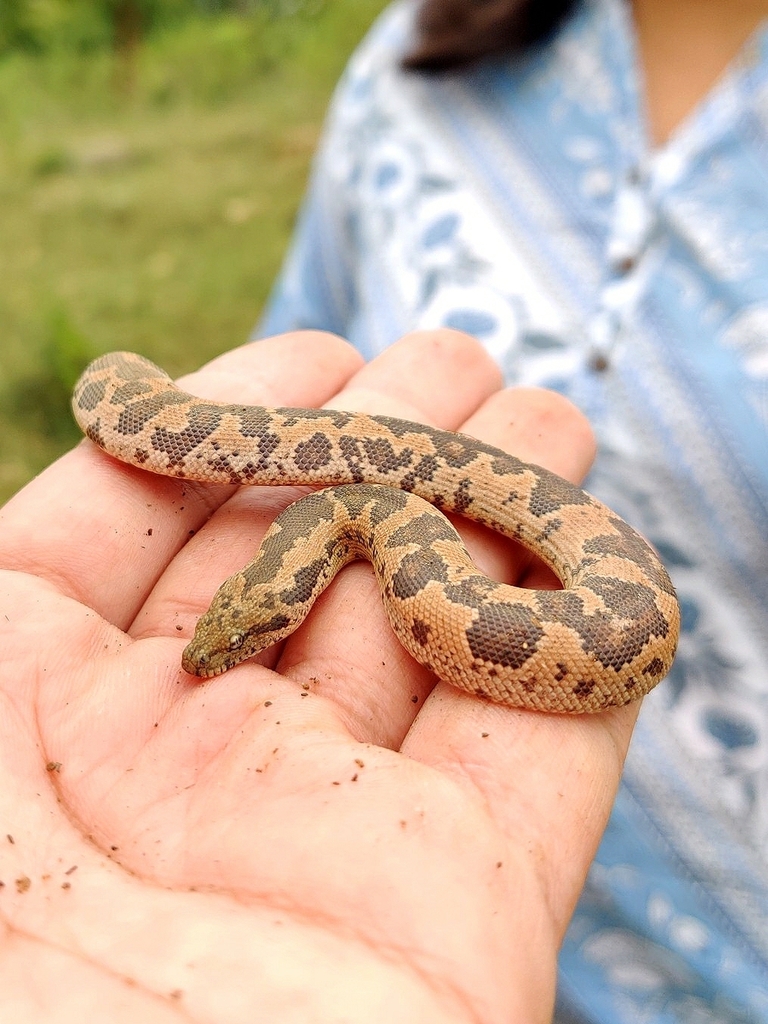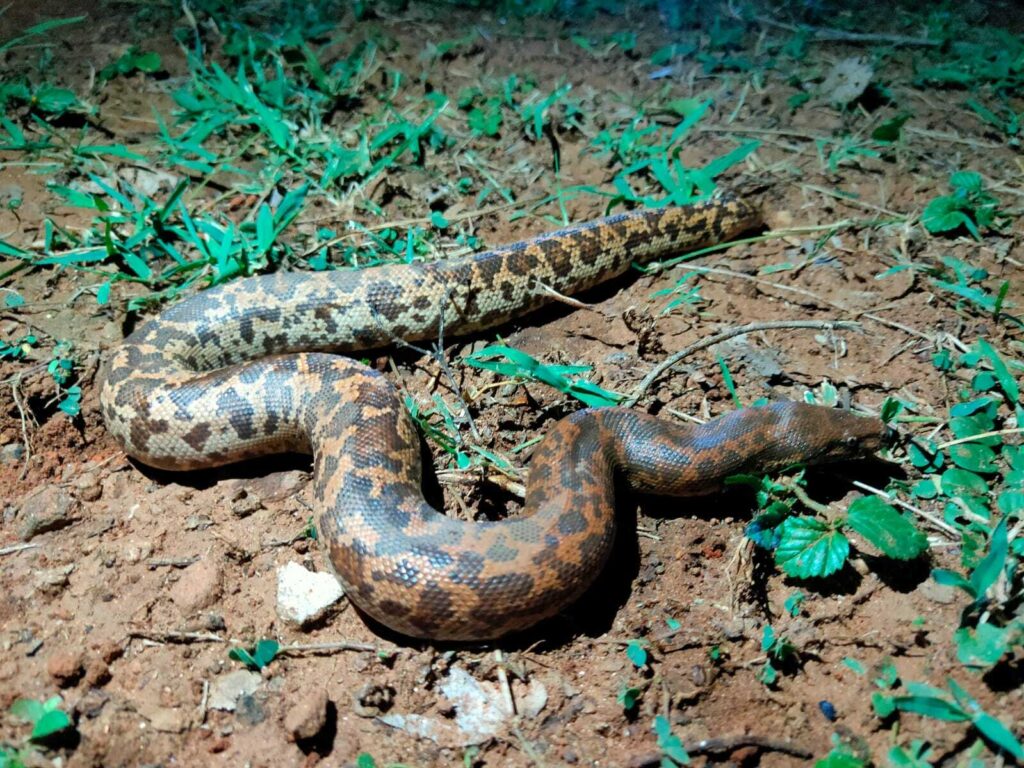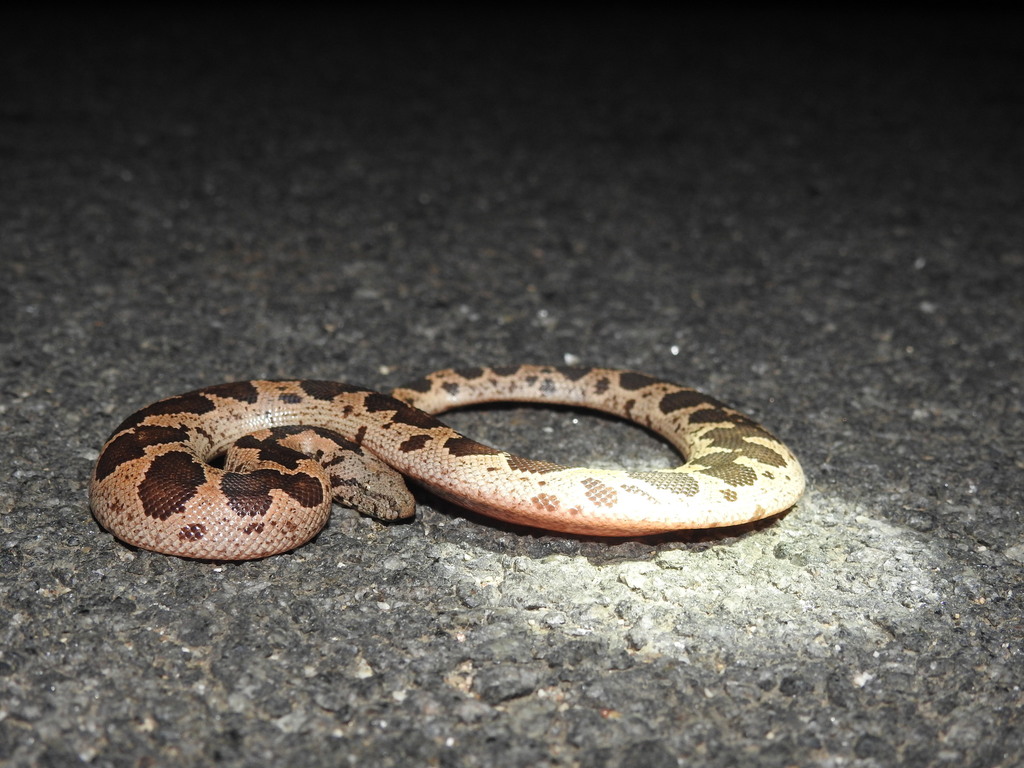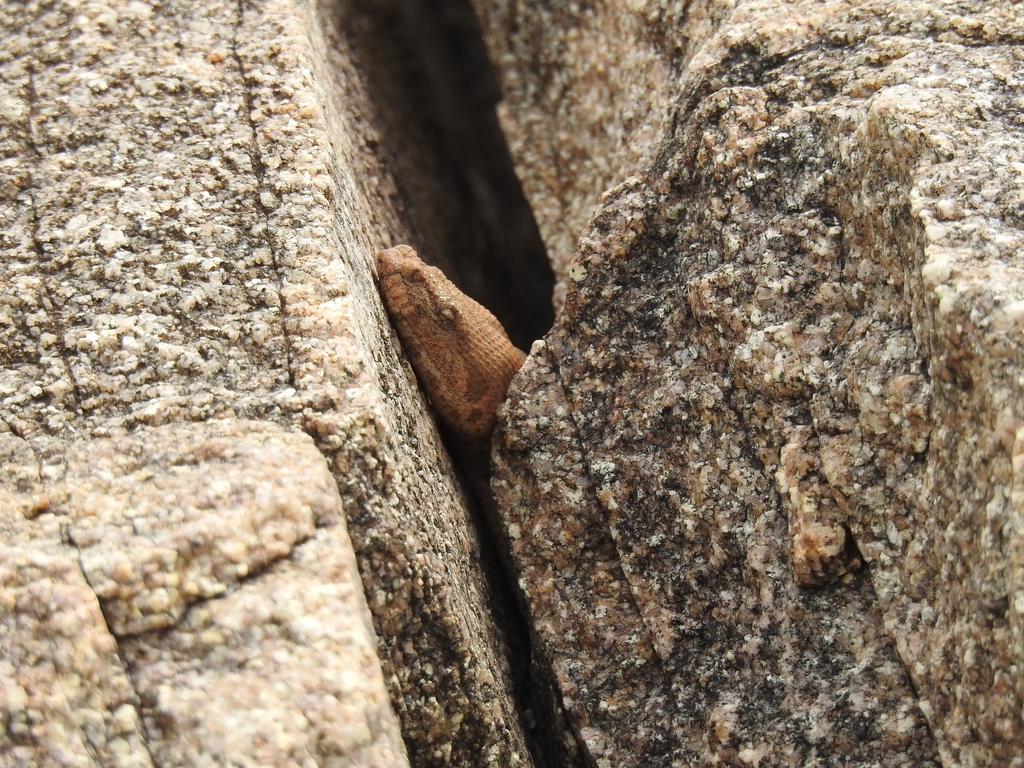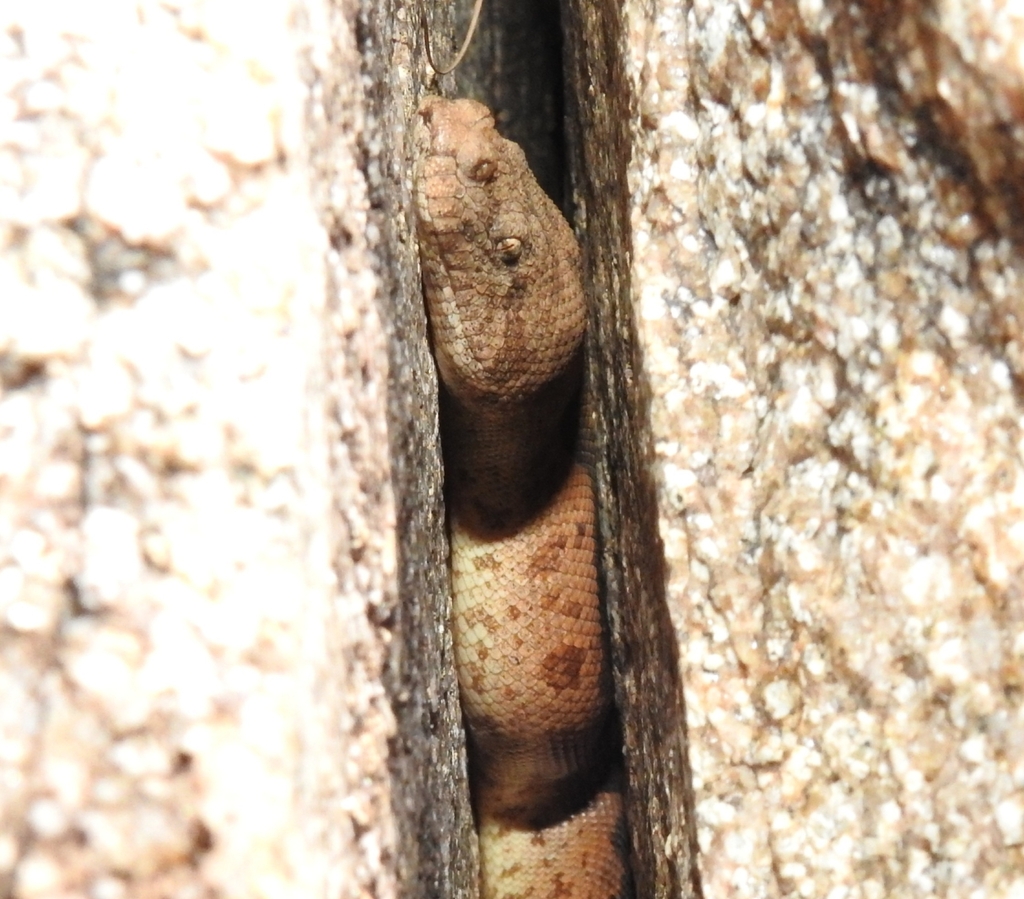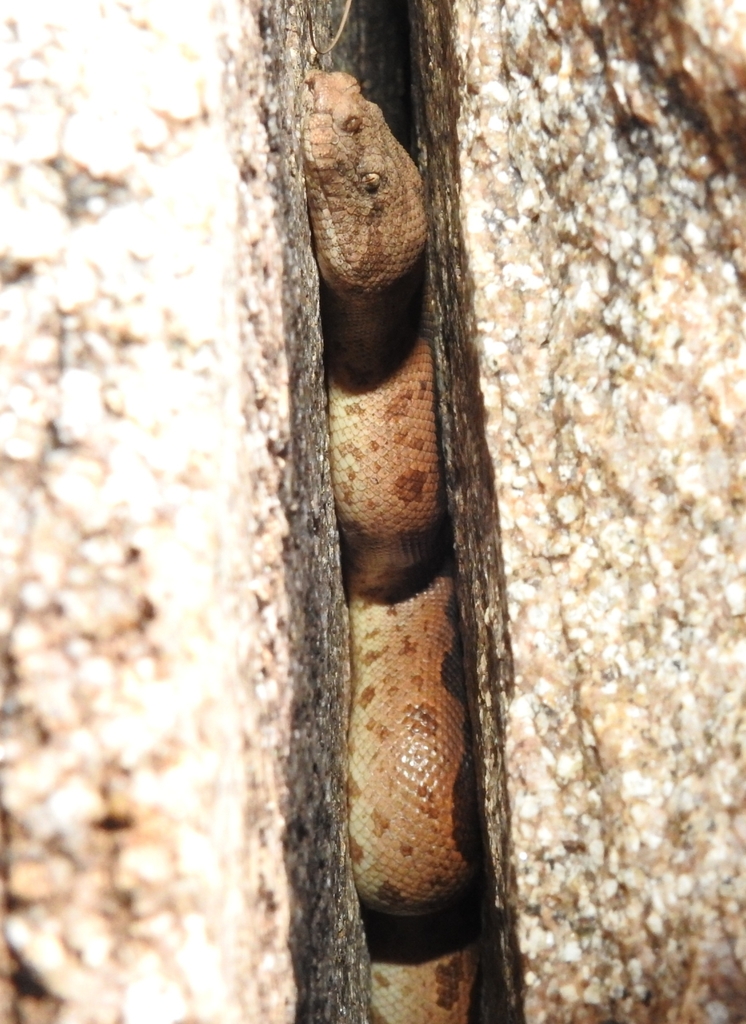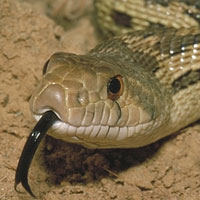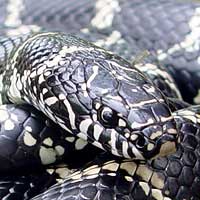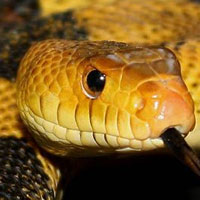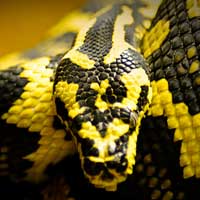Rough-scaled Sand Boa: A Distinctive Burrower with a Tough Exterior and Easy Temperament
The Rough-scaled Sand Boa is scientifically known as Eryx conicus and belongs to the Boidae family. This small, burrowing species is native to South Asia and is known for its coarse, keeled scales, giving it a distinct texture that sets it apart from other boas. Its robust body, reclusive nature, and ease of care have made it a favored choice among reptile enthusiasts and hobbyists alike.
Scientific Name: Eryx conicus
Snake Family: Boidae
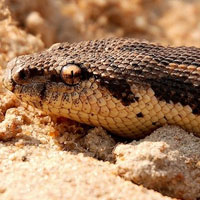
An Introduction to the Rough-scaled Sand Boa: Textured, Tough, and Totally Fascinating
The Rough-scaled Sand Boa is a small, fossorial boa native to the arid and semi-arid regions of South Asia. Scientifically classified as Eryx conicus and part of the Boidae family, this snake stands out due to the coarse texture of its keeled scales—earning it the name “rough-scaled.” Known for its chunky body, blunt head, and reclusive burrowing behavior, the Rough-scaled Sand Boa is a highly underrated pet snake that requires minimal space and offers plenty of personality. This guide provides a comprehensive look at its native habitat, feeding requirements, behavior, health, and ideal captive care setup.
Other Common Names for the Rough-scaled Sand Boa
- Russell’s Boa
- Indian Sand Boa
- Rough-tailed Sand Boa
- Spiny Sand Boa
Rough-scaled Sand Boa Habitat: Surviving in South Asia’s Harshest Terrain
The Rough-scaled Sand Boa is found throughout the dry, open habitats of the Indian subcontinent. Its range includes India, Pakistan, Nepal, and parts of Bangladesh, where it lives in scrublands, dry forests, rocky outcrops, and even agricultural areas. These boas are specialists in navigating loose, sandy, or gravelly substrates, where they spend most of their time buried or hidden beneath rocks and debris.
This species has adapted remarkably well to harsh, dry conditions. Unlike tropical boas that depend on humidity, the Rough-scaled Sand Boa thrives in arid zones with fluctuating temperatures. It avoids the daytime heat by remaining underground and becomes more active during twilight and nighttime hours.
Their cryptic lifestyle and camouflaged patterning help them avoid predators while lying in ambush for unsuspecting prey. Their natural habitat provides high thermal variation, and they rely heavily on surface and subsurface microhabitats for temperature regulation and moisture retention.
| Habitat Characteristic | Details |
|---|---|
| Geographic Range | India, Pakistan, Nepal, Bangladesh |
| Habitat Type | Scrublands, arid grasslands, dry forests |
| Preferred Substrate | Loose sand, soil, gravel |
| Temperature Range | 75–95°F (24–35°C) |
Rough-scaled Sand Boa Feeding: What These Ambush Predators Eat
The Rough-scaled Sand Boa is an ambush predator that relies on stealth and patience to catch its prey. In the wild, it feeds on small mammals such as rodents, as well as lizards and other reptiles. Its burrowing lifestyle allows it to wait concealed just beneath the surface of the substrate, striking with precision when prey approaches.
In captivity, feeding is relatively straightforward, especially for individuals already accustomed to a rodent-based diet. Frozen/thawed mice are ideal, and most boas will eagerly take them once adjusted to a captive routine.
- Hatchlings: Pinky mice every 5–7 days
- Juveniles: Fuzzy or hopper mice every 7–10 days
- Adults: Adult mice every 10–14 days
Feeding should be done in the enclosure using tongs, and prey items should not exceed the widest part of the snake’s body. Some individuals may fast during cooler months or while in shed. Always monitor feeding behavior and adjust schedules based on individual needs.
Behavior and Temperament: What It’s Like to Own a Rough-scaled Sand Boa
The Rough-scaled Sand Boa is a secretive, calm, and generally non-aggressive species. These snakes spend much of their time hidden, either under the substrate or in tight hiding spots. Despite their cryptic nature, they tolerate human interaction quite well and rarely bite.
Their typical response to disturbance is retreat or freezing rather than defense. They may feel firm or slightly rigid when handled due to their burrowing musculature but are not aggressive or prone to striking. With consistent handling, most individuals become even more comfortable and relaxed.
- Disposition: Calm and non-defensive
- Burrowing Behavior: Frequent; prefers to stay hidden
- Activity: Nocturnal or crepuscular
- Handling Response: Passive, slow-moving, docile
They are ideal for keepers who prefer observation over interaction. While they’re not as visually active as arboreal species, their unique textures, patterns, and underground behavior offer a different kind of fascination.
Rough-scaled Sand Boa Health and Lifespan: A Hardy and Long-Lived Companion
Rough-scaled Sand Boas are among the hardiest boid species in captivity. With proper care, they can live 15 to 20 years or more. Their resilience to fluctuating humidity and temperature makes them forgiving of beginner mistakes, although consistent conditions are always best.
- Obesity: Avoid overfeeding and ensure appropriate prey size
- Respiratory Infections: Caused by overly humid or cold environments
- Retained Shed: May occur without a proper rough surface to rub against
- Parasitic Infections: Especially in wild-caught specimens
Maintain a simple setup with a thermal gradient, dry substrate, and regular cleaning. Provide a shallow water bowl and monitor for signs of respiratory distress or weight fluctuation. Most health issues are easily preventable with correct husbandry and a stress-free environment.
| Health Metric | Ideal Range |
|---|---|
| Humidity | 20–40% |
| Ambient Temp | 78–85°F |
| Basking Spot | 90–95°F |
| Lifespan | 15–20 years |
Breeding the Rough-scaled Sand Boa: From Cooling to Neonates
Breeding Rough-scaled Sand Boas is relatively straightforward and follows a predictable seasonal cycle. As ovoviviparous reptiles, females retain fertilized eggs inside their bodies and give birth to live young. Successful breeding is typically triggered by a slight drop in temperatures and photoperiod to simulate the natural dry season.
Males begin courting behavior when reintroduced to females after cooling, displaying tail-wrapping and body alignment. Once copulation occurs, females undergo a gestation period of about 100–120 days. Birth typically occurs in the summer, with litters ranging from 4 to 12 live offspring.
- Breeding Age: 2–3 years
- Gestation Period: 100–120 days
- Litter Size: 4–12 neonates
- Neonate Size: 6–8 inches
Neonates can begin feeding within 1–2 weeks after their first shed. Feed small pinkies and house them individually to monitor health and feeding behavior. Captive-bred Rough-scaled Sand Boas are increasingly available and are recommended over wild-caught specimens for ease of care.
Captive Care and Handling of the Rough-scaled Sand Boa
Caring for a Rough-scaled Sand Boa is refreshingly simple. These snakes require minimal space, rarely outgrow their enclosures, and thrive in well-ventilated tanks with dry substrate and a few secure hides. Their fossorial nature means vertical climbing space isn’t necessary, making them perfect for rack systems or small desktop terrariums.
- Minimum Enclosure Size: 24x12x12 inches for adults
- Substrate: Aspen, sand/soil mix, or paper bedding
- Humidity: Keep dry; provide moist hide only during shed
- Water Bowl: Small and shallow; refill every few days
- Handling: 1–2x per week; gentle, supportive movements
Provide one or more hide boxes and avoid bright lighting. These snakes thrive on routine and low stress. Avoid overhandling, especially during shedding or fasting. With consistent husbandry and patience, Rough-scaled Sand Boas become confident and low-maintenance pets that are enjoyable to observe and easy to care for long-term.
Other Snakes In This Species
 Argentine Boa
Argentine Boa Calabar Burrowing Boa
Calabar Burrowing Boa Colombian Rainbow Boa
Colombian Rainbow Boa Common Boa
Common Boa Cooks Tree Boa
Cooks Tree Boa Cuban Boa
Cuban Boa Desert Rosy Boa
Desert Rosy Boa Desert Sand Boa
Desert Sand Boa Dumeril Boa
Dumeril Boa Egyptian Sand Boa
Egyptian Sand Boa Emerald Tree Boa
Emerald Tree Boa Haitian Boa
Haitian Boa Hog Island Boa
Hog Island Boa Madagascar Ground Boa
Madagascar Ground Boa Madagascar Tree Boa
Madagascar Tree Boa Pacific Boa
Pacific Boa Red Sand Boa
Red Sand Boa Rough-scaled Sand Boa
Rough-scaled Sand Boa Rubber Boa
Rubber Boa True Red Tail Boa
True Red Tail Boa Western Rainbow Boa
Western Rainbow Boa
